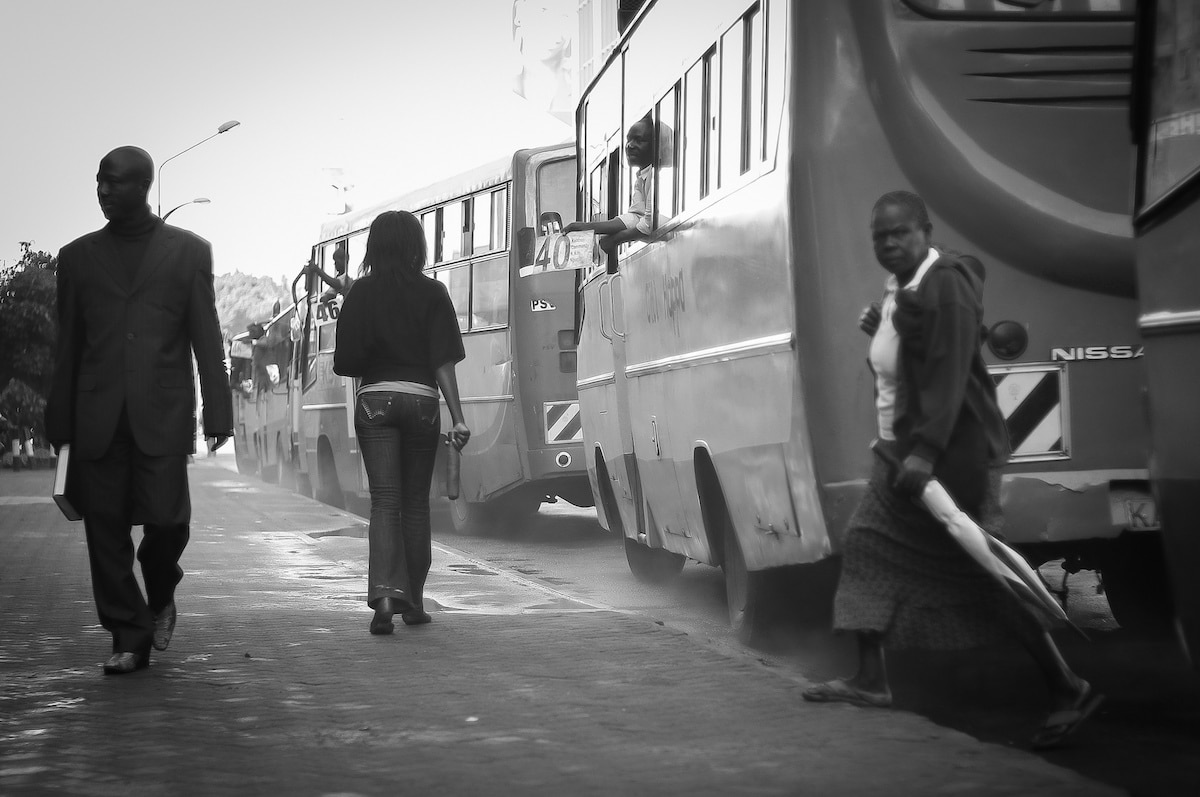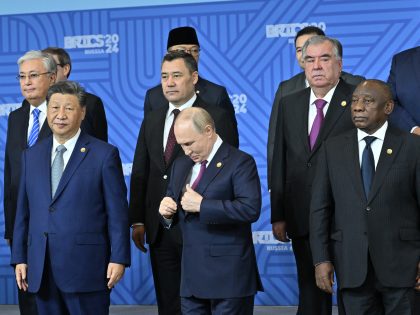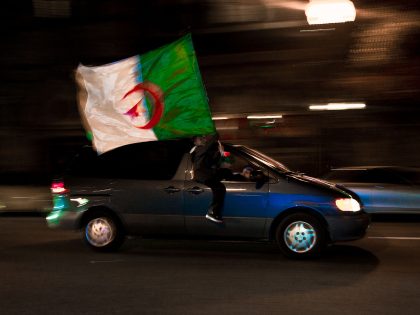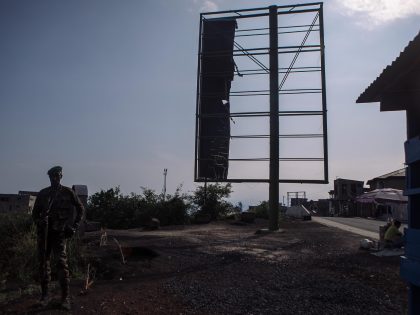The work of historical fiction
How does it differ from straight-forward history? What are the limits and possibilities of the genre?

Image via Xiaojun Deng Flickr.
Historical fiction has been having a bit of moment recently, especially among authors from the African continent and its diaspora. Authors imagine new possibilities out of old configurations; the past often proves as fecund as the futures that writers of speculative or science fiction might imagine. Recently novelists such Yaa Gyasi, Yvonne Owuor, Colson Whitehead, Chimamanda Adichie (in Half of a Yellow Sun) and others have availed themselves of the multiple opportunities that the past – whether well known or not – presents for creative narratives explorations. Earlier this year, the Kenyan journalist, poet and professor Peter Kimani joined their ranks. His Dance of the Jakaranda is an epic account of 20th century Kenya, narrating the East African colony’s history from the building of the Uganda Railway at the century’s open (and cosmopolitan world of its construction) to the politics and tensions of belonging that marked independent Kenya’s early days.
Dance of the Jakaranda is published by Akashic Books, an independent publishing house based in Brooklyn, devoted to publishing overlooked and/or politically defiant works of fiction. We are grateful to Akashic for bringing Kimani’s book to press, and to Peter Kimani for making the time to speak to AIAC.
Dance of the Jakaranda is a work of historical fiction, moving backwards and forwards in time between the turn of the 20th century and Kenya’s independence-era. What is the work of historical fiction? How does it differ from straight-forward history? What are the limits and possibilities of the genre?
Historical fiction, first and foremost, serves to re-imagine what’s already documented. In the case of Africa and other colonized societies, historical fiction serves to reclaim a people’s history, or at least inject fresh perspectives to counter the dominant colonial views. In most instances, colonial histories are fraught with inaccuracies, distortions and simple falsifications. Dorothy Hammond and Alta Jablow’s book, The Africa That Never Was, is a valuable text chronicling Western myths about Africa. To paraphrase Chinua Achebe, one of the fathers of African fiction, his motivation for writing Things Fall Apart was to show the world that Africa’s traditional past was not “one long night of savagery.”
That’s the point of departure of Dance of the Jakaranda. It reassesses the establishment of the British colony in Kenya at the turn of the last century to illuminate on the so-called British enlightenment of the “Dark Continent.” It challenges the reader to reassess what history books say colonial Kenya. The metaphor of fact as fiction appears rather appropriate at this this point and time in America.
If I were to write a straightforward history, I wouldn’t enjoy similar latitude. Fiction has enormous power as it allows people to see their lives in terms different from those conferred on them by others. The colonizers understood this. As Ngugi wa Thiong’o often narrates, his foundational play, The Black Hermit, written during his student days at Uganda’s Makerere University, was initially frowned upon by the British colonial authorities because it had a scene showing a British man raping a local woman. British men were considered “civilized” and so were not expected to perform such base crimes, even in imagined narratives.
At the heart of the novel is the construction of the so-called Lunatic Express, the railway line that enabled white settlement and facilitated the interior’s economic exploitation. Yet you seem to think it’s more complicated than that. Why and how did the railway matter?
Your assessment of the railway is accurate. It was the avenue through which the British accessed the Kenyan hinterland for its economic exploitation. But it is also a powerful force, disrupting local cultures and way of life, damaging the environment, etcetera. But it is also a transformational force, creating new townships where it courses through. Above all, the railway is a petri dish of sorts: its compartments are assigned according to racial hierarchy– with whites in First Class and Africans in Third Class –and becomes a metaphor of the segregated society that the colonialists build in Kenya.
In a certain sense, the railroad presages racial segregation as official policy in the colony. Different races lived separately, whether in urban or rural settlements. But the railroad also serves another important function. It starts by the ocean and ends at the headwaters of Lake Victoria, coursing through fertile territories. The Iron Snake, as locals call it, swallows all that the land can produce for shipping away to Europe. This finds traction with Walter Rodney’s seminal treatise, How Europe Underdeveloped Africa — the colonial architecture ensured Africa would continually feed European industries with raw materials to harness goods that were resold to Africa at far steeper prices than original value. That way, Europe created its wealth while impeding African industrialization.
The novel is also the story of two Englishmen, one Punjabi, and their literal and figurative “seeds.” They and their descendants are the protagonists and narrators for most of the novel. Although there is a disembodied, recognizably “African” narrative voice that considers practices of storytelling, etcetera, there is no “African” main character, as predominates, for example the work of other Kenyan writers, most notably Ngugi wa Thiong’o. Why did you, a Kenyan writer, choose write Kenya’s history this way, in these voices?
Ngugi wa Thiong’o made a similar observation when he read an earlier draft of the novel. I should mention Ngugi has been very important in my development as a writer. He also sat on my doctoral committee. Ngugi said he found it “intriguing” that a novel by an African writer lacked a major character who is African. My response then, as now, is that this absence is deliberate and symbolic. Whether you are dealing with colonial history or even in contemporary writings about Africa, Africans are passive witnesses to their own history. Think about major novels on Africa by European authors: Joseph Conrad’s Heart of Darkness, or Out of Africa by Karen Blixen. They do not have major African characters. Same with Ernest Hemingway. All African characters are peripheral. There are similar parallels in the way Western news networks report on the continent. In humanitarian reports, it is always a white aid worker, so-called consultant and what have you, who narrate Africa to the world.
The inter-textual reference to Heart of Darkness, for instance, situates Dance of the Jakaranda as a response to the whitewashed elements of African history through Western fiction. I hope I won’t give away too much by revealing the novel’s controlling motifs are darkness and light. I am inviting the reader to consider what so-called European enlightenment brings to the Dark continent. My story of Africa without Africans is a way of highlighting that absurdity.
The only African character with a substantial role in the novel is Nyundo, the drummer. He serves as a folk historian. Through him, the novel questions the privileging of the written, over the spoken word. The written being the colonial and “official” version of our history, the spoken being the people’s memory of their past. Nyundo’s actions in the novel are both subversive and restorative. His life in the novel symbolizes burial and resurrection of African memory.
[Spoiler alert] This is obviously an apposite moment to consider questions of statelessness, forced and volitional migration and national identity, in Kenya, the United States and beyond. To my mind, the novel’s “hero” is the Punjabi technician, Babu Salim, whose only seed is sisal and whose grandson becomes a political sensation towards the novel’s end. By that time, with the Empire having fallen, Kenya having become independent and India and Pakistan partitioned, Babu and his descendants are effectively stateless. What is your response to the “Indian question?” How/do questions of race and belonging complicate our understanding of nationalism, in Africa and elsewhere?
My novel teases out Benedict Anderson’s theory of imagined communities and the limits of nationalism. A running theme in the novel is the question of identity and belonging. I seek to answer the question: what did it mean to be Kenyan in that moment of our history? To find an answer, I go back to the founding of the Kenya colony, then leap forward to the onset of independence, when Africans take charge. The characters in the novel review what’s lost, and gained, in the new dispensation.
The Indians of East Africa have a complex heritage. They were colonized in their homelands, but some were complicit in the establishment of the Kenya colony, and enjoyed more privileges in colonial Kenya. Yet others fought to end British colonization of Kenya. It is the latter group that my book seeks to acknowledge. The question of identity becomes a larger contemplation of what it means to be human in a prejudiced world. Just look at contemporary US, UK, Germany, France, etc. There seems to be a competition to prove who is a more authentic American, British, German and French than others.
For a novel that stretches across the Indian Ocean and beyond, Dance of the Jakaranda also has a distinct sense of place. Why Nakuru?
I struggled with the question of the novel’s locale for a while. Initially, I was tempted to set the novel in some unnamed place on the continent. I personally have problems reading such novels because I feel unmoored. In any case, such a device is useful in times of political repression. The Malawian poet, Jack Mapanje, for instance, had to device codes to describe his homeland without invoking its name. The departed Kenyan playwright, Wahome Mutahi, used a similar device in his political plays at a time of political repression. The trick was for the place to remain some “imaginary” country somewhere in Africa.
But I was writing in a different time when we have a fair amount of freedom, so it was unnecessary to disguise my locale. I thought about the place that reflected the spirit of a multiracial and multicultural community, and I found Nakuru came closest to that. I researched on its history to recreate an authentic atmosphere of the time.



















